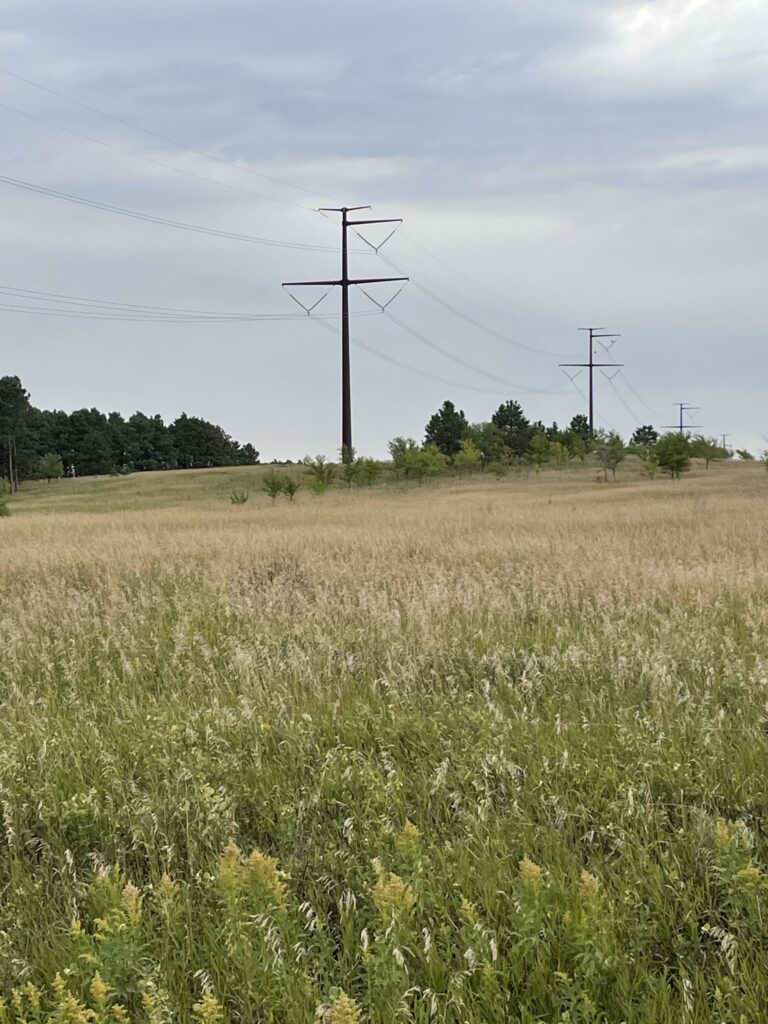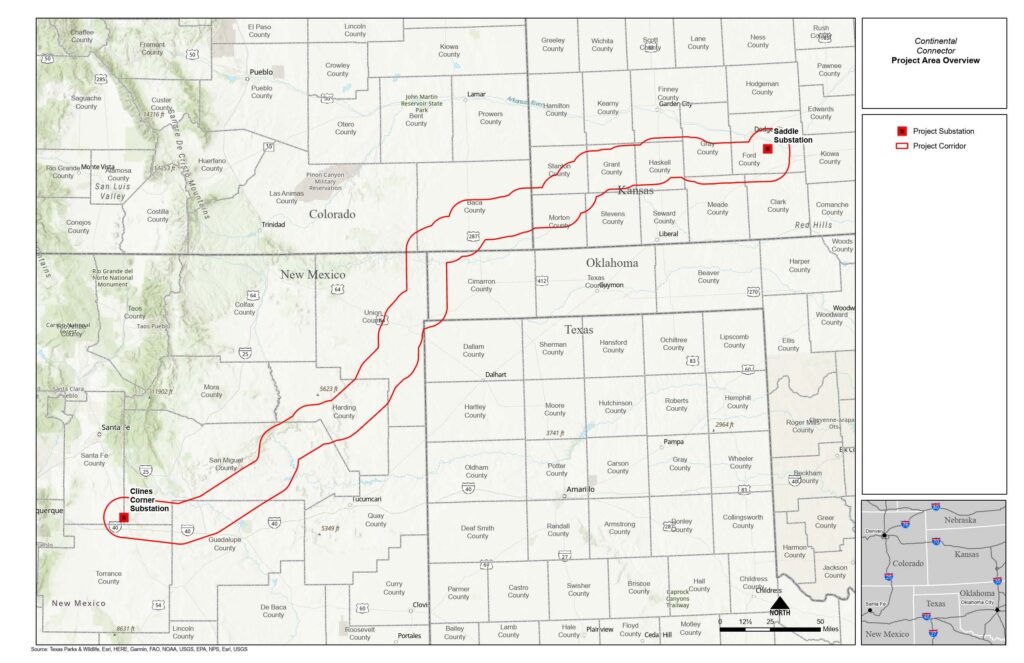Continental Connector
Continental Connector, LLC, a Grid United company, is developing a high voltage transmission line to connect the eastern and western interconnects, the two largest grid systems in America, by linking infrastructure in Santa Fe County, New Mexico to that in Ford County, Kansas. By enabling power to move between the two grids, Continental Connector will increase the reliability and resiliency of both power grids and allow generators in New Mexico and Kansas to access more markets.
The approximately 500-mile transmission line will be able to move up to 3,000 MW of power between its two converter stations (end points). The Continental Connector will be open to all sources of electrical power generation and will transport power in both directions – depending on the real-time power demand on each side.
Continental Connector is in the planning and development phase. We are studying several corridors for the proposed project and continue to gather input from stakeholders as we further evaluate the potential location for the line. Using that input, we will finalize our route analysis and initiate regulatory filings, with final approvals hoped for in 2025. Construction will commence after the project secures land rights and obtains the necessary regulatory approvals. Continental Connector could be operational as early as 2030.

LINKING THE GRID
Currently, the U.S. power system is comprised of three grids, or “Interconnections”— Eastern, Western, and ERCOT (covering most of Texas). They largely operate independently of one another due to limited connections between the three grids, leading to decreased energy efficiency and reliability for consumers.
Continental Connector will link two of the U.S power grids to create a wide range of benefits:
-
Reliable PowerBy increasing the transferability of power supply for both grids, Continental Connector will reduce the risk of outages/blackouts during extreme weather events.
-
New MarketsPower producers will gain a new outlet to export excess power during periods of low demand. Continental Connector is open to all forms of power generation.
-
Cost SavingsConsumers will benefit from new access to low-cost energy generated in different regions. By linking geographically and meteorologically diverse regions with complementary power generation profiles (i.e., that generate power at different times of day), Continental Connector will allow both sides of the line to efficiently import at optimal (low cost) times—which reduces the production costs of traditional power generators.
-
Jobs & Tax RevenueThe project will be an estimated $2 billion investment in New Mexico, Colorado, and Kansas and a long-term asset for the states. Communities and the states will benefit from additional property tax revenue, temporary and permanent new jobs, and direct community investments.
Project Location
Continental Connector will be up to 500 miles long, extending from an existing substation in Santa Fe County, New Mexico to an existing substation in Ford County, Kansas. Converter stations will be constructed near each endpoint to convert between AC and DC energy, allowing for more efficient and reliable transmission.
Landowner Relations
Our relationship with landowners and communities is at the core of everything we do. We believe that building strong and lasting relationships is key to the project’s success. We are committed to collaboratively developing the Wyoming Intertie, respecting landowners’ private property rights, and conducting easement negotiations in a fair manner.
Project Status
Continental Connector is currently in the planning and development phase. We are studying several corridors for the proposed HVDC transmission line and continue to gather input from stakeholders as we further evaluate the potential location for the line. We have also begun meeting with key stakeholders to introduce the project and gather input, which we will use to finalize our route analysis and initiate regulatory filings.


